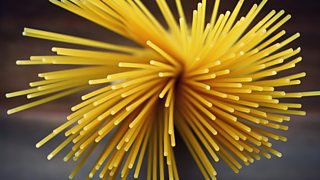How to get sour back into your life
In The Food Programme, Dan Saladino is exploring the tastes and temptations of sourness, from our evolution to the way we cook and eat. It’s a story of puckering pickles, science, fermentation and edible ants.
He also learns about some of the great ways we can bring more zing into our culinary lives – from Sichuan soups to fermented fruit teas.

How do you taste sour?
We humans have evolved with amazing abilities to detect the different chemicals we’re surrounded by, and taste is the most complex of all of these senses. Among the other basic types – sweet, salty, bitter and savoury – is sour.
Emily Liman, Professor of Biological Sciences at the University of Southern California, explains how sour is the taste of acids: citric acid in lemons, tartaric acid in grapes or acetic acid in vinegar.
-
![]()
The Food Programme: The Return of Zing
Dan Saladino explores the taste and temptations of sourness, from our evolution to the way we cook and eat.
When you drink a sip of lemonade, the citric acid releases the hydrogen ion, the proton. Those protons will then make contact with the taste receptor cells that coat the front, sides and back of your tongue and the roof of your mouth. Each of these cells is connected to neural fibres that send signals to the brain. Acid molecules will actually enter the receptor cells for sour and trigger an electrical signal to your brain.
Why do you taste sour?
So now we know about the process that gives us the sensation of sour, but why did we evolve to have this taste? Well, it’s all to do with vitamin C.
Sourness is a signal to let us know that a food contains vitamin C.
Along with our primate cousins, we humans are among a very small group of animals that are attracted to sourness. This is because long ago in our evolutionary history, we lost an enzyme that allows us to generate the essential compound ascorbic acid, otherwise known as vitamin C. And so, in order to be able to survive, we had to be able to locate a source of this compound, wherever it appeared in our environment. Sourness is a signal to let us know that a food contains vitamin C. We like it because it’s good for us.
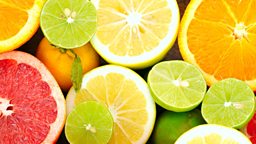
Sources of sour in the wild
If we go into the wild, sourness is everywhere. It gives us a clue as to what our ancestors ate, but perhaps it also lets us know what we should be eating more of today? Forager Miles Irving takes Dan on a wild walk through a field in Kent in search of sources of sourness from insects to red berries.
-
Rosehips
This sour, red seed-ball – the fruit of the rose – is a great source of vitamin C. (Back in the Second World War, kids were sent out with baskets to harvest rosehips because oranges weren’t making it in to the country.) If you’re keen to give rosehips a try, simply cut one in half, hollow out the seeds (which have itchy hairs which are best avoided) and eat the flesh. Or, if you want the added fibre you can eat the rosehips whole!
-
Sheep’s Sorrel
Sheep’s Sorrel is a relative of the dock, whose tangy young leaves are a cocktail of different acids. (The word sorrel actually comes from a German word meaning “sour leaf”.) Historically, scurvy – caused by a lack of vitamin C – was a huge problem in the navy, where men were without fresh fruit and veg for months on end. Sailors with the illness used to dream about eating greens and the first thing many of them would do when they jumped ashore was gorge on vegetables – one of which was sheep’s sorrel. Their symptoms would then clear up, almost overnight.
Is this the world's most nutritious vegetable?
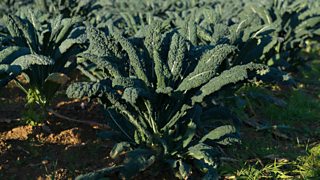
Cavolo nero, or black kale as we call it here, is said to be one of the world's most nutrient-dense vegetables.
-
Ants
Did you know, ants have a sour flavour? It’s because they contain formic acid. In fact, the Latin name for a lot of ants is Formica, after the acid that gives them their sour taste. And as well as this natural tang, ants also have flavour chemicals that range from coriander to citrus. Bold enough to try an orange Carpenter Ant, Dan agrees that it tastes amazing: there’s lemon, floral notes and a hint of spice.
The sourness of Sichuan food
One place where sour food is really worshipped is the Sichuan province of Southern China. The Chinese have been brewing vinegar for some 3,000 years – prized for its sharp and refreshing flavour and the way it dispels oiliness in food and arouses the appetite.
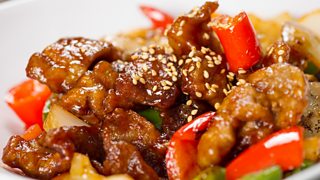
Chinese food expert Fuchsia Dunlop explains how, as well as enjoying the sour taste of vinegar as a condiment, the Chinese also use it widely in cooking. Sweet and sour pork remains one of the most popular Chinese dishes and in Sichuan cuisine you also get what is known as “lychee flavour”, which is a little more sour than sweet, like the fruit. There’s also the flavour combination of “sour and hot” with the sour taste coming from vinegar and the heat from chilies or ground white pepper.
The Sichuanese also love to get their sour taste from pickled vegetables. At the end of every meal they usually have a bowl full of rice, with pickles to send the rice on its way. In the past, every household pickled their own veg: pink radishes, carrots and cabbages with vinegar, liquor and spices. And when Sichuanese women married, they would take a pickle jar with its old brine as part of their dowry!
Making your own sources of sour
Sour may be big in China, but much of the world has lost its connection with sourness. It’s a taste that became swamped by ever greater waves of sugar and sweetness. Mark Diacano – whose new book, Sour, is an exploration of sourness in all its different guises – explains how we can bring sour back.
Piccalilli
This yellow relish shows just how well spices and sourness go together. Mark makes his from courgettes, baby sweetcorn, cauliflower and a little bit of onion – salting the veg first to get the moisture out, which allows the spicy vinegar to penetrate. He then adds classic Indian spice combinations, like turmeric, coriander and mustard for real punch.
Kombucha
Kombucha is fermented sweet tea. To make it, you simply add a scoby – a symbiotic community of bacteria and yeasts that looks like jelly – to your tea. The bacteria start to work their way through the sugars and in doing so leave their acids behind, turning it sour. Carbon dioxide is also produced as part of the process, and that’s where the little tickle of fizz comes from. When it’s the level of sour you like, bottle it and do a second fermentation in the bottle by popping in some raspberries and half a star anise for a fruity, spicy kick. So, you might ask, where do I get a scoby? Simple. You can buy your very own discs of microbial matter online.
Cheap, tasty and easy batch cooking ideas
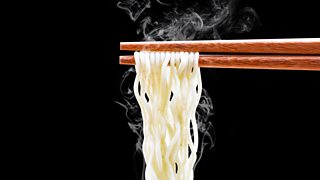
A host of inexpensive yet tasty ideas for easy batch cooking.
More from Radio 4
-
![]()
The Food Programme: The Return of Zing
Dan Saladino explores the taste and temptations of sourness, from our evolution to the way we cook and eat.
-
![]()
The taste of music: seven ways in which melody seasons our meals
There is a fascinating relationship between tunes and taste buds.
-
![]()
Ten tantalising facts about spaghetti
A look at our long and tangled relationship with spaghetti.
-
![]()
Are carbs your friend or foe?
We attempt to bust some of the myths surrounding this hotly debated topic.



